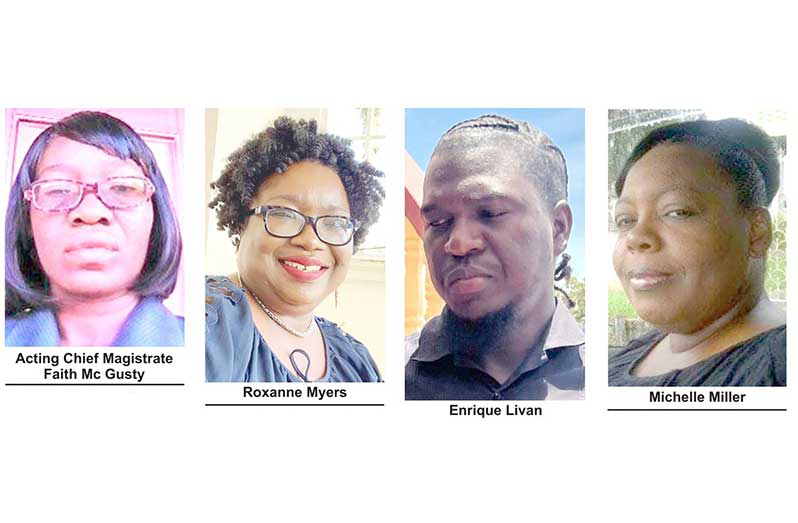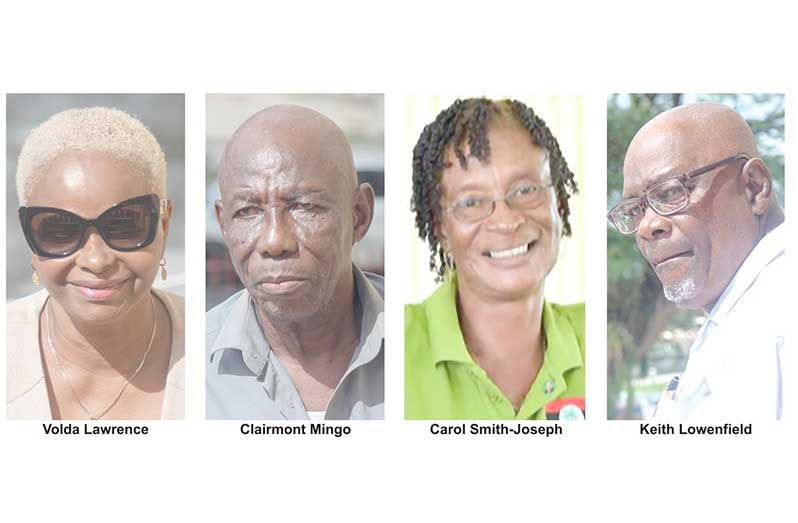– cites breach of rights
ATTORNEY-AT-LAW Nigel Hughes on Thursday objected to the admission of a video-recorded interview between the police and former Region Four Returning Officer Clairmont Mingo, contending that the recording was obtained in violation of his client’s constitutional rights.
Hughes raised his objections during the ongoing trial into allegations of electoral fraud stemming from the controversial March 2020 General and Regional Elections.
Before the objections were raised, Detective Corporal Richards took the stand to testify about the circumstances under which the video was recorded.
Richards, who is attached to the Timehri Police Station’s Criminal Investigation Department (CID), was called by prosecutor Attorney Madana Rampersaud to establish the authenticity of the recording and his role in producing it.

Under oath, Corporal Richards explained that in 2017 he completed a six-week course in crime-scene photography and videography, conducted by the Guyana Police Force (GPF). The course, he said, equipped him to handle photographic and video evidence professionally.
Richards told the court that on August 25, 2020, while stationed at the CID Headquarters Crime Laboratory, he was contacted by a senior officer identified as Assistant Superintendent Komal Pitama, who requested that a video and audio interview be recorded.
He said, “I proceeded to the CID conference room, where I met and spoke with Mr. Pitama, Mr. [Senior Superintendent Mitchell] Caesar, and Mr. Clairmont Mingo. I recorded Mr. Pitama and Mr. Caesar interviewing Mr. Mingo.”
Caesar serves as the Head of the Major Crimes Investigation Unit and also carries out the duties of Deputy Crime Chief.
According to the witness, the process was conducted voluntarily. “At no time did I, or anyone in my presence, make use of any force, threats, or inducement toward Mr. Mingo. It was done of his own free will,” he told the court.
The policeman testified that after completing the interview, he made two copies of the recording on separate blank DVDs, each labeled “CID HQ interview with Clairmont Mingo, Constable 24018 Richards, 2020-08-25.”
One copy, he said, was stored in his desk drawer for safekeeping, while the other was handed over to an officer for inclusion in the case file.
When later transferred from CID Headquarters, Richards lodged the exhibit in the general property room. He said he was able to identify the disc presented in court by its markings.
Following the testimony, the prosecution moved to tender the DVD into evidence. However, Hughes rose to object, arguing that the recording was inadmissible.
He stated that Mingo’s right to counsel was disregarded during the interview.
“He was not allowed to have his counsel present when he was being interviewed,” Hughes told the court. He further noted that his client had been “in custody for an extended period and was unwell.”
Hughes said that Mingo’s attorney, Darren Wade, had arrived at the CID Headquarters but was “sent away and not permitted to see him.”
According to the defence lawyer, despite Mingo’s insistence that he wanted his counsel to be present, the interview went ahead.
The defence further alleged that Mingo was told “the only way he would be released is if he consented to participate in the video-recorded interview.”
Hughes maintained that Mingo had been in custody for three days before the video was made, arguing that his participation was not truly voluntary.
Prosecutor, Attorney Latchmie Rahamat, challenged the objections raised by Hughes, asserting that the video in question contained nothing incriminating against the accused and should therefore be admitted into evidence.
However, Hughes stood firm on his original objections, maintaining that the circumstances under which the recording was obtained rendered it inadmissible.
Following the objections, Chief Magistrate Faith McGusty initiated a voir dire to decide whether the video evidence should be admitted.
A voir dire—often referred to as a trial within a trial is a legal proceeding used to assess the admissibility of evidence, such as confessions, video recordings, or police statements, before it is introduced in the main case.
The voir dire is scheduled to continue today.
BACKGROUND
Those facing charges include former Chief Elections Officer (CEO) Keith Lowenfield; former Deputy CEO Roxanne Myers; former Region Four Returning Officer, Clairmont Mingo; former Health Minister under the previous A Partnership for National Unity + Alliance For Change (APNU+AFC) government, Volda Lawrence; and People’s National Congress Reform (PNCR) member, Carol Smith-Joseph.
Also on trial are former Guyana Elections Commission (GECOM) staffers Sheffern February, Enrique Livan, Denise Babb-Cummings, and Michelle Miller.
Collectively, they face 19 conspiracy charges, and are represented by a robust defence team.



.jpg)









